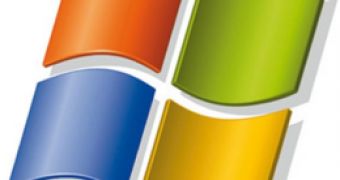Deploying Service Pack 3 directly on top of a fresh installation of Windows XP Service Pack 2 will kill all subsequent updates from Microsoft's servers. The Redmond giant warned that integrating SP3 into the operating system straight after performing a new installation of XP SP2 via Windows Update will result in the failed implementation of any additional releases from Windows Update, Microsoft Update or through Automatic Updates. In this context, installing the third and last service pack for Windows XP onto a freshly-deployed copy of XP SP2 will virtually cut off the operating system from the life-line represented by the company's updates, served either through WU, MU or AU.
"This problem occurs when the latest Windows Update client has been installed and then you install Windows XP SP3 before restarting the computer. This causes the new Wups2.dll file not to be enabled (registered). When Windows XP SP3 is installed, it does not detect the Wups2.dll file, and it sets the registry to point to the original Wups.dll file version that is included in Windows XP SP2 and Windows XP SP3. Because the registry files that correspond to the Wups2.dll file are missing, update installations are unsuccessful," Microsoft indicated.
The Redmond company does not provide an automatic resolve to this issue, but it does offer a mitigation. The users will have to access and download the Windows Update Agent, available for download for 32-bit, 64-bit and Itanium-based systems running Windows XP, and then manually install it. Next, the appropriate Windows Update Agent version has to be located through the Browse option of the Run dialog box. What users have to execute is the following: "C:WindowsUpdateAgent30-x86.exe /wuforce", depending on the location of the Windows Update Agent and following the addition of the "/wuforce" switch.
However, the same issue occurs when end users are trying to repair a machine using the Windows XP CD. Windows system files are replaced during the process of an XP repair operation and the Wups2.dll file did not ship with the original version of Windows XP. After repair, although the file still exists on the machine, the registry entries pointing to it are gone since the registry is replaced during repair.
Users will have to "register the Wups2.dll file in Windows. Stop the Automatic Updates service. Open cmd (command prompt) type the following command, and then press ENTER: net stop wuauserv. Register the Wups2.dll file: at the command prompt, type the following command, and then press ENTER: regsvr32 %windir%syswow64wups2.dll. (For a computer that is running Windows XP Professional x64 Edition, type the following command, and then press ENTER: regsvr32 %windir%syswow64wups2.dll. Start the Automatic Updates service. To do this, type the following command at the command prompt, and then press ENTER: "net start wuauserv"," Microsoft revealed.

 14 DAY TRIAL //
14 DAY TRIAL //